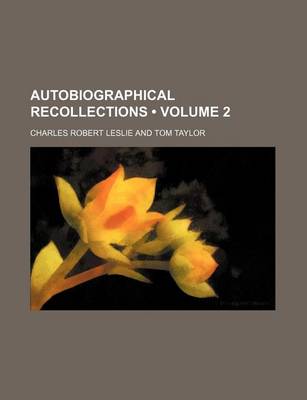Cambridge Library Collection - Art and Architecture
1 primary work • 5 total works
Volume 2
The Royal Academician Charles Leslie (1794-1859) also wrote biographies of fellow painters. His life of John Constable and a two-volume work on Sir Joshua Reynolds are also reissued in this series. On his death, the Reynolds work was completed by the journalist and dramatist Tom Taylor (1817-80), who also edited Leslie's two-volume autobiography, published in 1860. Though born in London, Leslie was an American, a child prodigy in drawing, who returned to Britain in 1811 to study painting with Benjamin West and Washington Allston. He had enormous admiration for the paintings of his contemporaries and of the previous generation, and his reminiscences are intended to preserve 'some recollections of those chiefly whom I could praise'. Volume 2 of this lively and self-deprecating work, full of good-humoured anecdotes, consists of extensive extracts from Leslie's letters and an appendix listing his paintings.
Life and Times of Sir Joshua Reynolds 2 Volume Set
by Charles Robert Leslie and Tom Taylor
Published 27 March 2014
This two-volume life of Sir Joshua Reynolds (1723-92) was begun by the Royal Academician Charles Leslie (1794-1859), who had previously published a life of John Constable, also reissued in this series. On Leslie's death, the journalist and dramatist Tom Taylor (1817-80) completed the work, published in 1865. Leslie's motive was that he felt that Reynolds had been unfairly treated by an earlier biography. He aimed to show that Reynolds was 'the genial centre of a most various and brilliant society, as well as the transmitter of its chief figures to our time by his potent art'. One of the greatest artists of the eighteenth century, especially famous for his portraits, Reynolds was also instrumental in founding the Royal Academy, and was its first president. He taught and lectured on art, and moved in the intellectual circle as his intimate friend Dr Johnson, Charles Burney, Gibbon and Sheridan.
Life and Times of Sir Joshua Reynolds: Volume 2
by Charles Robert Leslie and Tom Taylor
Published 1 January 2010
This two-volume life of Sir Joshua Reynolds (1723–92) was begun by the Royal Academician Charles Leslie (1794–1859), who had previously published a life of John Constable, also reissued in this series. On Leslie's death, the journalist and dramatist Tom Taylor (1817–80) completed the work, published in 1865. Leslie's motive was that he felt that Reynolds had been unfairly treated by an earlier biography. He aimed to show that Reynolds was 'the genial centre of a most various and brilliant society, as well as the transmitter of its chief figures to our time by his potent art'. One of the greatest artists of the eighteenth century, especially famous for his portraits, Reynolds was also instrumental in founding the Royal Academy, and was its first president. Volume 2 begins in 1773, and ends with Reynolds' death. Leslie also provides an assessment of his status as an artist.
Life and Times of Sir Joshua Reynolds: Volume 1
by Charles Robert Leslie and Tom Taylor
Published 1 January 2010
This two-volume life of Sir Joshua Reynolds (1723–92) was begun by the Royal Academician Charles Leslie (1794–1859), who had previously published a life of John Constable, also reissued in this series. On Leslie's death, the journalist and dramatist Tom Taylor (1817–80) completed the work, published in 1865. Leslie's motive was that he felt that Reynolds had been unfairly treated by an earlier biography. He aimed to show that Reynolds was 'the genial centre of a most various and brilliant society, as well as the transmitter of its chief figures to our time by his potent art'. One of the greatest artists of the eighteenth century, especially famous for his portraits, Reynolds was also instrumental in founding the Royal Academy, and was its first president. Volume 1 covers his early life and his progress as an artist until his fiftieth year.
The Royal Academician Charles Leslie (1794–1859) also wrote biographies of fellow painters. His life of John Constable and a two-volume work on Sir Joshua Reynolds are also reissued in this series. On his death, the Reynolds work was completed by the journalist and dramatist Tom Taylor (1817–80), who also edited Leslie's two-volume autobiography, published in 1860. Though born in London, Leslie was an American, a child prodigy in drawing, who returned to Britain in 1811 to study painting with Benjamin West and Washington Allston. He had enormous admiration for the paintings of his contemporaries and of the previous generation, and his reminiscences are intended to preserve 'some recollections of those chiefly whom I could praise'. Volume 1 of this lively and self-deprecating work, full of good-humoured anecdotes, is prefaced by an introductory essay by Taylor on Leslie and his art.

